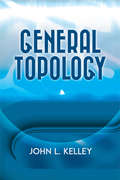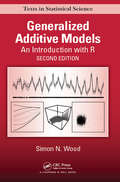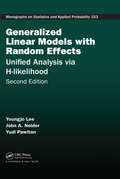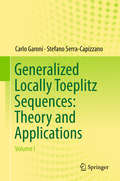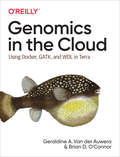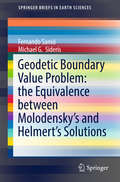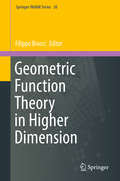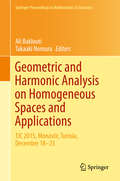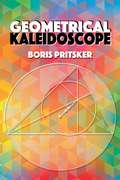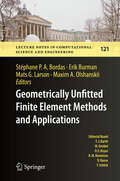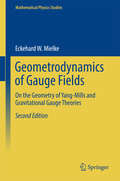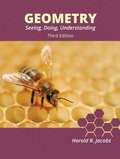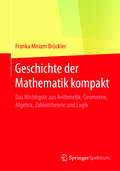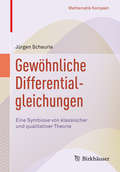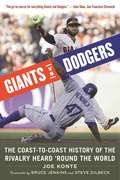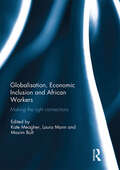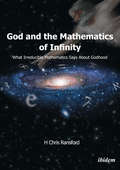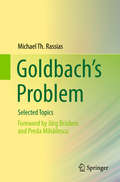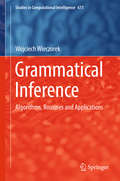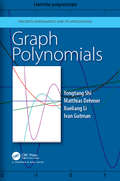- Table View
- List View
Ganit Bhag 1 class 8 - S.C.E.R.T. Raipur - Chhattisgarh Board: गणित भाग 1 कक्षा 8 - एस.सी.ई.आर.टी. रायपुर - छत्तीसगढ़ बोर्ड
by Raipur C. G. Rajya Shaikshik Anusandhan Aur Prashikshan Parishadगणित भाग 1 पाठ्यपुस्तक कक्षा 8वी का राज्य शैक्षिक अनुसंधान और प्रशिक्षण परिषद् छत्तीसगढ़ रायपुर ने हिंदी भाषा में प्रकाशित किया गया है, इस पाठ्यपुस्तक में दस अध्याय दिये गए है। इस पाठ्यपुस्तक में बड़ी से बड़ी संख्या को अलग-अलग रूप में लिखना, घात की सहायता से चक्रवृद्धि ब्याज की गणना करना, साथ ही साथ ज्यामितीय आकृतियों के विशिष्ट गुणों को भी समझाया गया हैं। बीजीय व्यंजकों का गुणनखंडन करने के साथ-साथ किसी वस्तु द्वारा स्थान घेरने से संबंधित अवधारणाओं का भी स्पष्टीकरण किया गया । यह पुस्तक गणित शिक्षा के उद्देश्यों एवं बच्चों के उपलब्धि स्तर को ध्यान में रखकर बनाई गई है। गणित से संबंधित सार्थक प्रश्न बना सकें, उन्हें हल कर सकें। साथ ही अपने दैनिक जीवन के अनुभवों से निर्मित गणितीय ज्ञान का रूपान्तर अपनी सुविधानुसार कर सकें। इस पुस्तक के लेखन में विभिन्न शासकीय और अशासकीय संस्थाओं तथा प्रबुद्ध नागरिकों का मार्गदर्शन और सहयोग मिला है।
Ganit Bhag 2 class 8 - S.C.E.R.T. Raipur - Chhattisgarh Board: गणित भाग 2 कक्षा 8 - एस.सी.ई.आर.टी. रायपुर - छत्तीसगढ़ बोर्ड
by Raipur C. G. Rajya Shaikshik Anusandhan Aur Prashikshan Parishadगणित भाग 2 पाठ्यपुस्तक कक्षा 8वी का राज्य शैक्षिक अनुसंधान और प्रशिक्षण परिषद् छत्तीसगढ़ रायपुर ने हिंदी भाषा में प्रकाशित किया गया है, इस पाठ्यपुस्तक में नौं अध्याय दिये गए है। इस पाठ्यपुस्तक में बड़ी से बड़ी संख्या को अलग-अलग रूप में लिखना, घात की सहायता से चक्रवृद्धि ब्याज की गणना करना, साथ ही साथ ज्यामितीय आकृतियों के विशिष्ट गुणों को भी समझाया गया हैं। बीजीय व्यंजकों का गुणनखंडन करने के साथ-साथ किसी वस्तु द्वारा स्थान घेरने से संबंधित अवधारणाओं का भी स्पष्टीकरण किया गया । यह पुस्तक गणित शिक्षा के उद्देश्यों एवं बच्चों के उपलब्धि स्तर को ध्यान में रखकर बनाई गई है। गणित से संबंधित सार्थक प्रश्न बना सकें, उन्हें हल कर सकें। साथ ही अपने दैनिक जीवन के अनुभवों से निर्मित गणितीय ज्ञान का रूपान्तर अपनी सुविधानुसार कर सकें। इस पुस्तक के लेखन में विभिन्न शासकीय और अशासकीय संस्थाओं तथा प्रबुद्ध नागरिकों का मार्गदर्शन और सहयोग मिला है।
Gaussian Processes on Trees: From Spin Glasses to Branching Brownian Motion
by Anton BovierBranching Brownian motion (BBM) is a classical object in probability theory with deep connections to partial differential equations. This book highlights the connection to classical extreme value theory and to the theory of mean-field spin glasses in statistical mechanics. Starting with a concise review of classical extreme value statistics and a basic introduction to mean-field spin glasses, the author then focuses on branching Brownian motion. Here, the classical results of Bramson on the asymptotics of solutions of the F-KPP equation are reviewed in detail and applied to the recent construction of the extremal process of BBM. The extension of these results to branching Brownian motion with variable speed are then explained. As a self-contained exposition that is accessible to graduate students with some background in probability theory, this book makes a good introduction for anyone interested in accessing this exciting field of mathematics.
General Topology (Dover Books on Mathematics)
by John L. Kelley"The clarity of the author's thought and the carefulness of his exposition make reading this book a pleasure," noted the Bulletin of the American Mathematical Society upon the 1955 publication of John L. Kelley's General Topology. This comprehensive treatment for beginning graduate-level students immediately found a significant audience, and it remains a highly worthwhile and relevant book for students of topology and for professionals in many areas. A systematic exposition of the part of general topology that has proven useful in several branches of mathematics, this volume is especially intended as background for modern analysis. An extensive preliminary chapter presents mathematical foundations for the main text. Subsequent chapters explore topological spaces, the Moore-Smith convergence, product and quotient spaces, embedding and metrization, and compact, uniform, and function spaces. Each chapter concludes with an abundance of problems, which form integral parts of the discussion as well as reinforcements and counter examples that mark the boundaries of possible theorems. The book concludes with an extensive index that provides supplementary material on elementary set theory.
Generalized Additive Models: An Introduction with R, Second Edition (Chapman & Hall/CRC Texts in Statistical Science)
by Simon N. WoodThe first edition of this book has established itself as one of the leading references on generalized additive models (GAMs), and the only book on the topic to be introductory in nature with a wealth of practical examples and software implementation. It is self-contained, providing the necessary background in linear models, linear mixed models, and generalized linear models (GLMs), before presenting a balanced treatment of the theory and applications of GAMs and related models. The author bases his approach on a framework of penalized regression splines, and while firmly focused on the practical aspects of GAMs, discussions include fairly full explanations of the theory underlying the methods. Use of R software helps explain the theory and illustrates the practical application of the methodology. Each chapter contains an extensive set of exercises, with solutions in an appendix or in the book’s R data package gamair, to enable use as a course text or for self-study.
Generalized Linear Models with Random Effects: Unified Analysis via H-likelihood, Second Edition (Chapman & Hall/CRC Monographs on Statistics and Applied Probability)
by Youngjo Lee John A. Nelder Yudi PawitanThis is the second edition of a monograph on generalized linear models with random effects that extends the classic work of McCullagh and Nelder. It has been thoroughly updated, with around 80 pages added, including new material on the extended likelihood approach that strengthens the theoretical basis of the methodology, new developments in variable selection and multiple testing, and new examples and applications. It includes an R package for all the methods and examples that supplement the book.
Generalized Locally Toeplitz Sequences: Theory and Applications
by Carlo Garoni Stefano Serra-CapizzanoBased on their research experience, the authors propose a reference textbook in two volumes on the theory of generalized locally Toeplitz sequences and their applications. This first volume focuses on the univariate version of the theory and the related applications in the unidimensional setting, while the second volume, which addresses the multivariate case, is mainly devoted to concrete PDE applications. This book systematically develops the theory of generalized locally Toeplitz (GLT) sequences and presents some of its main applications, with a particular focus on the numerical discretization of differential equations (DEs). It is the first book to address the relatively new field of GLT sequences, which occur in numerous scientific applications and are especially dominant in the context of DE discretizations. Written for applied mathematicians, engineers, physicists, and scientists who (perhaps unknowingly) encounter GLT sequences in their research, it is also of interest to those working in the fields of Fourier and functional analysis, spectral analysis of DE discretization matrices, matrix analysis, measure and operator theory, numerical analysis and linear algebra. Further, it can be used as a textbook for a graduate or advanced undergraduate course in numerical analysis.
Genomics in the Cloud: Using Docker, GATK, and WDL in Terra
by Geraldine A. Van der Auwera Brian D. O'ConnorData in the genomics field is booming. In just a few years, organizations such as the National Institutes of Health (NIH) will host 50+ petabytesâ??or over 50 million gigabytesâ??of genomic data, and theyâ??re turning to cloud infrastructure to make that data available to the research community. How do you adapt analysis tools and protocols to access and analyze that volume of data in the cloud?With this practical book, researchers will learn how to work with genomics algorithms using open source tools including the Genome Analysis Toolkit (GATK), Docker, WDL, and Terra. Geraldine Van der Auwera, longtime custodian of the GATK user community, and Brian Oâ??Connor of the UC Santa Cruz Genomics Institute, guide you through the process. Youâ??ll learn by working with real data and genomics algorithms from the field.This book covers:Essential genomics and computing technology backgroundBasic cloud computing operationsGetting started with GATK, plus three major GATK Best Practices pipelinesAutomating analysis with scripted workflows using WDL and CromwellScaling up workflow execution in the cloud, including parallelization and cost optimizationInteractive analysis in the cloud using Jupyter notebooksSecure collaboration and computational reproducibility using Terra
Geodetic Boundary Value Problem: the Equivalence between Molodensky’s and Helmert’s Solutions
by Fernando Sansò Michael G. SiderisThis book offers a new approach to interpreting the geodetic boundary value problem, successfully obtaining the solutions of the Molodensky and Stokes boundary value problems (BVPs) with the help of downward continuation (DC) based methods. Although DC is known to be an improperly posed operation, classical methods seem to provide numerically sensible results, and therefore it can be concluded that such classical methods must in fact be manifestations of different, mathematically sound approaches. Here, the authors first prove the equivalence of Molodensky's and Stoke's approaches with Helmert's reduction in terms of both BVP formulation and BVP solutions by means of the DC method. They then go on to show that this is not merely a downward continuation operation, and provide more rigorous interpretations of the DC approach as a change of boundary approach and as a pseudo BVP solution approach.
Geometric Function Theory in Higher Dimension (Springer INdAM #26)
by Filippo BracciThe book collects the most relevant outcomes from the INdAM Workshop “Geometric Function Theory in Higher Dimension” held in Cortona on September 5-9, 2016. The Workshop was mainly devoted to discussions of basic open problems in the area, and this volume follows the same line. In particular, it offers a selection of original contributions on Loewner theory in one and higher dimensions, semigroups theory, iteration theory and related topics. Written by experts in geometric function theory in one and several complex variables, it focuses on new research frontiers in this area and on challenging open problems. The book is intended for graduate students and researchers working in complex analysis, several complex variables and geometric function theory.
Geometric and Harmonic Analysis on Homogeneous Spaces and Applications: TJC 2015, Monastir, Tunisia, December 18-23 (Springer Proceedings in Mathematics & Statistics #207)
by Ali Baklouti Takaaki NomuraThis book provides the latest competing research results on non-commutative harmonic analysis on homogeneous spaces with many applications. It also includes the most recent developments on other areas of mathematics including algebra and geometry.Lie group representation theory and harmonic analysis on Lie groups and on their homogeneous spaces form a significant and important area of mathematical research. These areas are interrelated with various other mathematical fields such as number theory, algebraic geometry, differential geometry, operator algebra, partial differential equations and mathematical physics. Keeping up with the fast development of this exciting area of research, Ali Baklouti (University of Sfax) and Takaaki Nomura (Kyushu University) launched a series of seminars on the topic, the first of which took place on November 2009 in Kerkennah Islands, the second in Sousse on December 2011, and the third in Hammamet on December 2013. The last seminar, which took place December 18th to 23rd 2015 in Monastir, Tunisia, has promoted further research in all the fields where the main focus was in the area of Analysis, algebra and geometry and on topics of joint collaboration of many teams in several corners. Many experts from both countries have been involved.
Geometrical Kaleidoscope (Dover Books on Mathematics)
by Boris PritskerA high school course in geometry and some curiosity and enthusiasm for the subject are the only prerequisites for tackling this original exploration into the field, long a favorite for readers whose interest in math is not only practical and educational, but also recreational. The book centers on geometric thinking—what it means, how to develop it, and how to recognize it. Readers will discover fascinating insights into many aspects of geometry and geometrical properties and theorems, including such classic examples as Archimedes' law of the lever, Euler's line and circle properties, Fagnano's problem, and Napoleon's theorem.The volume is divided into sections on individual topics such as "Medians of a Triangle," and "Area of a Quadrilateral." Chapters typically begin with some interesting geometrical history, some relevant theorems, and some worked examples of problems followed by problems for readers to figure out for themselves (solutions are provided at the end of the book). The result is a many-faceted exploration, rather like a kaleidoscope, focusing on the mysteries and the pleasures of geometry.
Geometrically Unfitted Finite Element Methods and Applications: Proceedings Of The Ucl Workshop 2016 (Lecture Notes in Computational Science and Engineering #121)
by Mats G. Larson Stéphane P. A. Bordas Erik Burman Maxim A. OlshanskiiThis book provides a snapshot of the state of the art of the rapidly evolving field of integration of geometric data in finite element computations. The contributions to this volume, based on research presented at the UCL workshop on the topic in January 2016, include three review papers on core topics such as fictitious domain methods for elasticity, trace finite element methods for partial differential equations defined on surfaces, and Nitsche’s method for contact problems. Five chapters present original research articles on related theoretical topics, including Lagrange multiplier methods, interface problems, bulk-surface coupling, and approximation of partial differential equations on moving domains. Finally, two chapters discuss advanced applications such as crack propagation or flow in fractured poroelastic media. This is the first volume that provides a comprehensive overview of the field of unfitted finite element methods, including recent techniques such as cutFEM, traceFEM, ghost penalty, and augmented Lagrangian techniques. It is aimed at researchers in applied mathematics, scientific computing or computational engineering.
Geometrodynamics of Gauge Fields: On the Geometry of Yang-Mills and Gravitational Gauge Theories (Mathematical Physics Studies)
by Eckehard W. MielkeThis monograph aims to provide a unified, geometrical foundation of gauge theories of elementary particle physics. The underlying geometrical structure is unfolded in a coordinate-free manner via the modern mathematical notions of fibre bundles and exterior forms. Topics such as the dynamics of Yang-Mills theories, instanton solutions and topological invariants are included. By transferring these concepts to local space-time symmetries, generalizations of Einstein's theory of gravity arise in a Riemann-Cartan space with curvature and torsion. It provides the framework in which the (broken) Poincaré gauge theory, the Rainich geometrization of the Einstein-Maxwell system, and higher-dimensional, non-abelian Kaluza-Klein theories are developed. Since the discovery of the Higgs boson, concepts of spontaneous symmetry breaking in gravity have come again into focus, and, in this revised edition, these will be exposed in geometric terms. Quantizing gravity remains an open issue: formulating it as a de Sitter type gauge theory in the spirit of Yang-Mills, some new progress in its topological form is presented. After symmetry breaking, Einstein’s standard general relativity with cosmological constant emerges as a classical background. The geometrical structure of BRST quantization with non-propagating topological ghosts is developed in some detail.
Geometry of Quantum States: An Introduction to Quantum Entanglement
by Ingemar Bengtsson Karol ŻyczkowskiQuantum information theory is a branch of science at the frontier of physics, mathematics, and information science, and offers a variety of solutions that are impossible using classical theory. This book provides a detailed introduction to the key concepts used in processing quantum information and reveals that quantum mechanics is a generalisation of classical probability theory. The second edition contains new sections and entirely new chapters: the hot topic of multipartite entanglement; in-depth discussion of the discrete structures in finite dimensional Hilbert space, including unitary operator bases, mutually unbiased bases, symmetric informationally complete generalized measurements, discrete Wigner function, and unitary designs; the Gleason and Kochen-Specker theorems; the proof of the Lieb conjecture; the measure concentration phenomenon; and the Hastings' non-additivity theorem. This richly-illustrated book will be useful to a broad audience of graduates and researchers interested in quantum information theory. Exercises follow each chapter, with hints and answers supplied.
Geometry: Seeing, Doing, Understanding
by Harold JacobsJacob's Geometry textbook has guided nearly one million students through the process of developing not just knowledge about Geometry, but a lasting understanding of Geometry concepts, principles, and application. Considered by many to be the authoritative Geometry text, Jacobs' math has solidified its reputation of preparing students for academic & career success and is a highly respected standard for teaching high school Geometry. Harold Jacobs' clear, engaging, conversational approach guides students through practical, real-world Geometry, allowing them to develop a true understanding of deductive reasoning, lines & angles, congruence, inequalities, quadrilaterals, area, triangles, circles, theorems, polygons, geometric solids, and more! <P><P><i>Advisory: Bookshare has learned that this book offers only partial accessibility. We have kept it in the collection because it is useful for some of our members. Benetech is actively working on projects to improve accessibility issues such as these.</i>
Geschichte der Mathematik kompakt: Das Wichtigste aus Arithmetik, Geometrie, Algebra, Zahlentheorie und Logik
by Franka Miriam BrücklerDieses Buch gibt einen kompakten Überblick über die historische Entwicklung und Ideengeschichte derjenigen mathematischen Disziplinen, die sich schon bis zur Renaissancezeit weitgehend eigenständig entwickelt haben: Arithmetik, Geometrie, Algebra, Zahlentheorie und mathematische Logik. Die Darstellung verzichtet auf Vollständigkeit und konzentriert sich stattdessen ganz bewusst auf wesentliche oder besonders interessante Aspekte: Einzelne Persönlichkeiten und Ideen exemplarisch herausgegriffen und detaillierter dargestellt als andere – es entsteht jedoch insgesamt ein stimmiges, ausgewogenes und dennoch übersichtliches Gesamtbild. Dabei wird insbesondere begreifbar, dass die historische Entwicklung der Mathematik von zahlreichen Einflüssen angetrieben wurde, dass zahlreiche theoretische Resultate aus ganz praktischen Gründen gefunden wurden (und umgekehrt), und dass es zu den wenigsten mathematischen Problemen nur einen (richtigen) Lösungsweg gibt. Auch Querverbindungen zwischen den verschiedenen Disziplinen werden deutlich. Das Buch wendet sich an all jene, die eine übersichtliche, kurze Darstellung der zentralen Momente in der Geschichte der Mathematik suchen – vor allem Professoren, (zukünftige) Lehrer und Studierende.
Gewöhnliche Differentialgleichungen
by Jürgen ScheurleDas vorliegende Lehrbuch enthält eine kompakte, in Vorlesungen erprobte Einführung in diese moderne Sichtweise der GDGn, wobei der klassische Stoff nicht vernachlässigt wird. Einerseits behandelt es auf mathematisch sehr gründliche Weise die wichtigsten analytischen Methoden und Resultate der klassischen Theorie für allgemeine Anfangswertprobleme, inklusive von Sätzen zur Existenz, Eindeutigkeit, stetigen bzw. glatten Abhängigkeit und Fortsetzung von Lösungen. Auch lineare Rand- und Eigenwertprobleme werden betrachtet. Andererseits werden geometrische Konzepte wie Phasenraum, Phasenfluss, Orbit, Äquivalenz und Stabilität eingeführt sowie ausführlich diskutiert. Es wird lediglich Vertrautheit mit dem an Universitäten in Grundvorlesungen gelehrten Stoff der Analysis und der Linearen Algebra vorausgesetzt. Die Anordnung des Stoffs ist so gewählt, dass das Lehrbuch in Vorlesungen unterschiedlicher mathematischer Tiefe im Rahmen von Bachelor- und Masterstudiengängen einsetzbar ist, wobei es insbesondere eine ideale Grundlage für weiterführende Lehrveranstaltungen über dynamische Systeme ist.
Giants vs. Dodgers: The Coast-to-Coast History of the Rivalry Heard ?Round the World
by Steve Dilbeck Joe Konte Bruce JenkinsGames between the Dodgers and Giants are never just another day at the ballpark. Dating back to the late nineteenth century-when the teams embodied the competitive spirit of rival metropolises of New York and Brooklyn-the Giants-Dodgers rivalry gained intensity throughout the early twentieth century. The cheering and jeering continued unabated until 1957, when the clubs backed the moving vans up to the Polo Grounds and Ebbets Field, and took their rivalry to new venues in Los Angeles and San Francisco.Indeed, Brooklyn-New York baseball was a tough act to follow, but the West Coast version didn’t take long to fire up the emotions. Only six games into the first West Coast season, the clubs had their first beanball dustup. The venue had changed but the venom remained, and the rivalry became author Joe Konte’s obsession. Fifty-eight years ago, he attended one of the first Giants-Dodgers games ever played outside of New York. A longtime newspaper editor and baseball fiend, Konte understands what is so special about this storied rivalry. And so-via statistical analysis, game summaries, roster scrutiny, manager matchups, season recaps, and more-he has put together a rivalry bible. Revised and updated to include the events of the last three seasons-from the Giants’ 2014 World Series win and the Dodgers’ playoff runs-Giants vs. Dodgers captures the spirit and intensity of one of the greatest rivalries in American sports.
Globalisation, Economic Inclusion and African Workers: Making the Right Connections
by Maxim Bolt Kate Meagher Laura MannThis book addresses the question of whether greater inclusion in the global economy offers a solution to rising unemployment and poverty in contemporary Africa. The authors trace the connection between global demographic change and new mechanisms of economic inclusion via global value chains, digital networks, labour migration, and corporate engagement with the bottom of the pyramid, challenging the claim that African workers have become functionally irrelevant to the global economy. They expose the shift of global demand for African workers from formal to increasingly informalised labour arrangements, mediated by social enterprises, labour brokers, graduate entrepreneurs and grassroots associations. Focusing on global employment connections initiated from above and from below, the authors examine whether global labour linkages increase or reduce problems of vulnerable and unstable working conditions within African countries, and considers the economic and political conditions needed for African workers to capture the gains of inclusion in the global economy. This book was previously published as a special issue of the Journal of Development Studies.
God and the Mathematics of Infinity: What Irreducible Mathematics Says about Godhood
by H. Chris RansfordDrawing on the science and mathematics of infinity, H. Chris Ransford analyzes the traditional concept of godhood and reaches surprising conclusions. He addresses humankind's abiding core debate on the meaning of spirituality and God. Using mathematics, he explores key questions within this debate: for instance, why does evil exist if there is a God? The book fastidiously does not take sides nor proffers opinions, it only follows allowable mathematics wherever it leads. By doing so, it makes a major contribution to an understanding of the nature of reality.
Goldbach’s Problem
by Michael Th. RassiasImportant results surrounding the proof of Goldbach's ternary conjecture are presented in this book. Beginning with an historical perspective along with an overview of essential lemmas and theorems, this monograph moves on to a detailed proof of Vinogradov's theorem. The principles of the Hardy-Littlewood circle method are outlined and applied to Goldbach's ternary conjecture. New results due to H. Maier and the author on Vinogradov's theorem are proved under the assumption of the Riemann hypothesis. The final chapter discusses an approach to Goldbach's conjecture through theorems by L. G. Schnirelmann. This book concludes with an Appendix featuring a sketch of H. Helfgott's proof of Goldbach's ternary conjecture. The Appendix also presents some biographical remarks of mathematicians whose research has played a seminal role on the Goldbach ternary problem. The author's step-by-step approach makes this book accessible to those that have mastered classical number theory and fundamental notions of mathematical analysis. This book will be particularly useful to graduate students and mathematicians in analytic number theory, approximation theory as well as to researchers working on Goldbach's problem.
Grammatical Inference
by Wojciech WieczorekThis book focuses on grammatical inference, presenting classic and modern methods of grammatical inference from the perspective of practitioners. To do so, it employs the Python programming language to present all of the methods discussed. Grammatical inference is a field that lies at the intersection of multiple disciplines, with contributions from computational linguistics, pattern recognition, machine learning, computational biology, formal learning theory and many others. Though the book is largely practical, it also includes elements of learning theory, combinatorics on words, the theory of automata and formal languages, plus references to real-world problems. The listings presented here can be directly copied and pasted into other programs, thus making the book a valuable source of ready recipes for students, academic researchers, and programmers alike, as well as an inspiration for their further development. >
Graph Polynomials (Discrete Mathematics and Its Applications)
by Yongtang Shi; Matthias Dehmer; Xueliang Li; Ivan GutmanThis book covers both theoretical and practical results for graph polynomials. Graph polynomials have been developed for measuring combinatorial graph invariants and for characterizing graphs. Various problems in pure and applied graph theory or discrete mathematics can be treated and solved efficiently by using graph polynomials. Graph polynomials have been proven useful areas such as discrete mathematics, engineering, information sciences, mathematical chemistry and related disciplines.
Graphs, Algorithms, and Optimization (Discrete Mathematics and Its Applications)
by William Kocay Donald L. KreherThe second edition of this popular book presents the theory of graphs from an algorithmic viewpoint. The authors present the graph theory in a rigorous, but informal style and cover most of the main areas of graph theory. The ideas of surface topology are presented from an intuitive point of view. We have also included a discussion on linear programming that emphasizes problems in graph theory. The text is suitable for students in computer science or mathematics programs.

